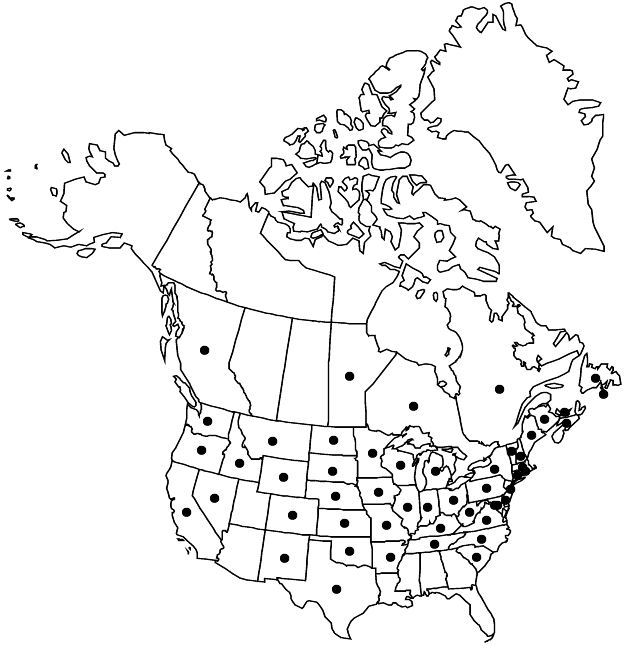Difference between revisions of "Hypericum perforatum subsp. perforatum"
FNA>Volume Importer |
FNA>Volume Importer |
(No difference)
| |
Revision as of 22:42, 16 December 2019
Herbs erect, with rooting, not creeping, base, forming clumps, 2–12 dm. Stems: internodes 2-lined, with black glands usually in lines. Leaves spreading, sessile or petiolate (to 1 mm); blade oblong or elliptic to lanceolate-elliptic or linear, 7–30 × 2–16 mm, base cuneate to rounded, margins plane or recurved to revolute, apex obtuse or apiculate to rounded, midrib with 2–3 pairs of branches, tertiary veins not densely reticulate, black glands intramarginal (spaced) and, usually, laminar (distal). Inflorescences subcorymbiform to broadly pyramidal or cylindric, 1–15-flowered. Flowers 12–30 mm diam.; sepals not imbricate, spreading in fruit, lanceolate or narrowly oblong to linear, unequal to subequal, 2.5–7 × 0.6–2(–3) mm, apex acute to aristate; petals golden yellow, narrowly obovate to oblanceolate, 7–13 mm; stamens 40–90; anther gland black; styles 4–6 mm. Capsules ovoid to narrowly ovoid-pyramidal, 6–10 × 3.5–5 mm, with longitudinal vittae and shorter oblique vittae or vesicles. Seeds slightly carinate, 0.8–1.2 mm; testa reticulate-foveolate. 2n = 32, 48.
Phenology: Flowering late summer (Jul–Sep).
Habitat: Dry to moist, open to partly shaded, usually disturbed ground
Elevation: 0–1600 m
Distribution

St. Pierre and Miquelon, B.C., Man., N.B., Nfld. and Labr. (Nfld.), N.S., Ont., P.E.I., Que., Ark., Calif., Colo., Conn., Del., D.C., Idaho, Ill., Ind., Iowa, Kans., Ky., Maine, Md., Mass., Mich., Minn., Mo., Mont., Nebr., Nev., N.H., N.J., N.Mex., N.Y., N.C., N.Dak., Ohio, Okla., Oreg., Pa., R.I., S.C., S.Dak., Tenn., Tex., Vt., Va., Wash., W.Va., Wis., Wyo., Europe (excluding most of Italy), Asia (e to the Altai Mountains, nw Mongolia).
Discussion
Subspecies perforatum occurs in all of North America from Newfoundland to British Columbia southward, and central Canada. It was introduced into both sides of that continent, and it still appears to be less common in (or
absent from) some central and southern regions. The common name Klamath weed alludes to a region of northern California where it occupied over three million acres as an agricultural pest causing photosensitization, spontaneous abortions, and central nervous system damage in stock animals and is also an invasive species altering the composition of natural grasslands. Good control has been attained by beetles, one leaf-eating (Chrysolina gemellata) and the other root-boring (Agrilus hyperici) (J. K. Holloway 1957).
Selected References
None.